Iceland is an iconic overlanding destination. From glaciers and mountains to rivers and canyons, there is a seemingly endless opportunity for overland travel in this country, despite it being about the size of Ohio.
Despite its demure size, it’s overflowing with things to see and places to go. Perhaps the biggest challenge with visiting Iceland is deciding how to spend your time.
Fellow OVR Features Editor (and my wife), Mercedes Lilienthal, and I first visited Iceland in July of 2019. We had foul weather for nearly our entire nine days there. We tried to make the best of it, but constantly tent camping in the rain and wind takes its toll.
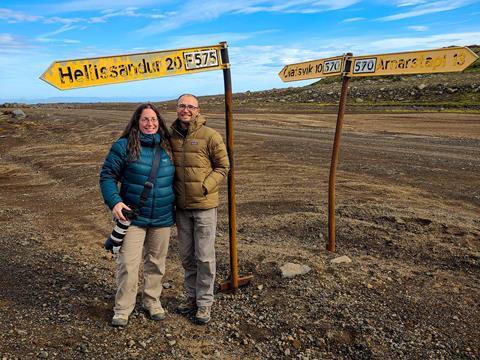
We couldn’t see much of Iceland’s sights because of the thick fog; it’s like we bought the obstructed-view tickets to the country. We didn’t get a chance to interact with many Icelanders either (most people we met were tourists). By the end of the trip, we knew we’d need another shot at Iceland.
Through a series of fortunate events, we returned to Iceland in August 2023, this time with Mercedes’ cousin, Helga. We wished for sunny warm days, rain-free nights, clear views, and to meet Icelanders. We rented an AWD Toyota RAV4 to circumnavigate Iceland both on- and off-pavement.
While a true 4x4 like a Land Cruiser Prado or Jeep Wrangler would’ve added more capability they were far more expensive. We figured the RAV4 would be a good compromise on cost, comfort, and capability. We also hoped it’d take us to see everything we missed in ’19 and explore new areas.
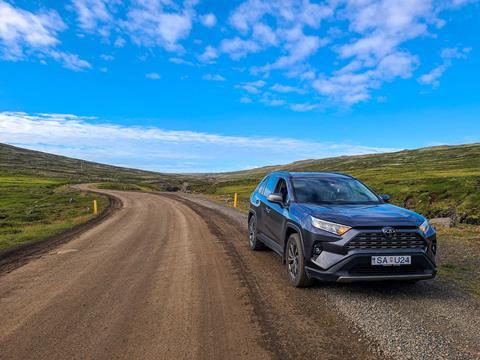
We’d have 11 days to circumnavigate the country, once again tent camping along the way. This would be Iceland Redemption Tour 2023.
Camping Accommodations
Like our first trip, we camped through our entire visit, sans the first and last night. This meant bringing a trusty tent, warm sleeping bags, lots of layers, a small stove, and other supplies. We hoped the weather would be better than 2019; it couldn’t have been worse.
We were familiar with Iceland’s plethora of organized campgrounds; most towns have at least one. Some are a small field with a toilet, others are large parks complete with indoor cooking, big bathrooms, and sometimes, a guitar to strum.
Unbeknownst to us, we visited the country during Commerce Day, one of the top camping weekends, so spots were at a premium. Surprisingly, we were only turned away at one of 11 spots during our entire stay.
Parks and Waterfalls
We met Helga in Reykjavik and stayed her Icelandic friend’s apartment. The weather was sunny, warm (low 60s) and perfect! Meeting actual Icelanders and great weather? That’s 2 of 3 goals met on day one!
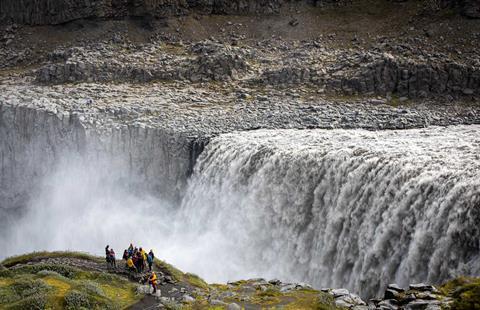
We hit the road with our first stop being Þingvellir National Park, situated between the Eurasian and North American tectonic plates. It’s also where Iceland’s parliament met for over 950 years between the years 930 and 1798.
It’s a great introduction to Iceland and a good walk. From there we drove to the iconic multi-tiered Gullfoss (“Gold Falls”) waterfall and throngs of tourists. Even packed with people it’s incredibly impressive.
We left the pavement behind in favor of gravel and went in search of the towering twin falls of Granni and Haifoss, both offering stunning vistas in unique ways. While Gullfoss is easy to get to and packed with people, Granni and Haifoss are more secluded and scenic and nestled in a stunning deep canyon of basalt.
In 2019 it was a wall of fog with no falls to be seen. This time? A grandiose display of nature at its finest. We drove to our first night of camp where we opened up a bottle of Icelandic Old Tom Gin and enjoyed the mild evening.
Glaciers and Canyons
We headed back to the pavement the next day to visit Sólheimajökull, a valley or outlet glacier. You can take a brief hike to it and see, touch, and even hike on the glacier. It’s amazing how far the glacier had retreated since we visited it in 2019. It also highlighted the power and fragility of these massive moving ice sheets.
From there it was onto the emerald green Fjaðrárgljúfur Canyon. The 1.9-mile out-and-back trail had rolling elevations and stunning views. The trail weaved along a deeply carved canyon with otherworldly rock formations and narrow protrusions to stand on. It was a wonderful hike that’ll make you think you’re in a fantastical land. And frankly, you are.
The Glacial lagoon at Jökulsárlón
Strewn with icebergs of all shapes, sizes, and colors, the Jökulsárlón glacial lagoon could be added to one of the wonders of the world. Here, the Vatnajökull glacier breaks off into a lagoon forming new icebergs, which slowly meander their way through the body of water and out to sea. We chilled out at a quiet secluded spot strewn with stones which were warmed by the August sun.
We also visited the lagoon’s main area crawling with tourists. Here, like frozen bits of abstract performance art, icebergs tumbled and tossed, eventually leaving the lagoon through a fast-moving channel of water. The shores along this area were filled with beached icebergs forming Diamond Beach.
On this black sand beach, you can get right up to these melting ice chunks, which were sometimes crystal clear. Like all of Iceland, this is an everchanging area and is different from minute to minute. It should be a must-stop for anyone visiting Iceland.
Pro Tip: The Zodiac boat tours offer an up-close look at the floating icebergs and is worth the trip but be sure to schedule ahead.
Continued Travels, Making Miles
The first few days of our trip were spent seeing a lot of sites and making many stops. But if we were going to make it all the way around Iceland, we’d need to make miles.
Even from within the confines of our trusty RAV4, Iceland’s beauty was striking and eclectic. From flat, brown and stark plains, to towering mountains adorned with white glaciers, or rolling green hills: to call Iceland breathtaking is a vast understatement.
We traveled northeast to Egilsstaðir and down the incredible descent to Seydisfjordur. Here, cruise ships dock, as does the Smyril ferry from Denmark, complete with overlanders and their rigs from Europe.
There are many European-plated vehicles in Iceland, and most of them arrive and depart via the Smyril ferry. We explored the dirt byways along the fjord and saw a host of Icelandic birds like Whimbrel and Woodcock … and the ever-present sheep.
Unplanned Puffin Pursuits
Helga read in August we may see hundreds of puffins, those adorable sea birds, if we make a jaunt north to Borgarfjörður Eystri. While it was out of our way, the weather was good, and this was a childhood dream of hers, so we went for it.
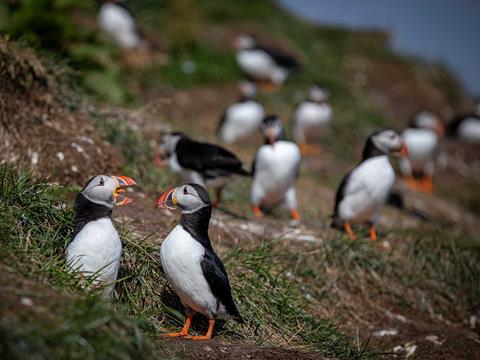
The road to Borgarfjörður Eystri was like a ribbon of asphalt twisting gracefully among the Icelandic coastline. Upon our arrival, there were hundreds of puffins along the hillside.
These wonderfully cute waterfowl were taking off, flying, landing, and waddling around the area. Up to 10,000 puffins will come and go from here each summer, and were seemingly unphased by our presence.
Observing Nature’s Beauty and Power
Another unplanned trip was to Dettifoss, the second most powerful waterfall in all of Europe, next to the Rhine Falls. Dettifoss produces thunderous noise and a massive wall of gray water infused with glacial runoff. You can feel its power as millions of gallons of water dive over a wide cliff. Dettifoss’ more graceful neighbor, Sellfoss, is in the same area and is worth the short, craggy hike to see it cascade over basalt columns.
After a brief stop at the mud pots and geothermal area, Hverir, and a trip up to the northern town of Húsavík for coffee and a grocery resupply, we made our way to Akureyri, the largest town in the north at a modest 18,000 people. It’s home to Einstök, our favorite Icelandic brewery. And yes, we stopped for a taster flight served on a wooden Viking axe.
Akureyri is also home to Iceland’s largest campground, and we stayed there. While very busy, it was quiet with good—and much needed—shower facilities.
Getting Off the Ring Road
From this point, we get off of Iceland’s famous Ring Road and onto some of byways into more isolated areas. For us, leaving the Ring Road is where the adventure intensifies. These are the byways that take us away from the multitude of tourists and into less visited areas.
From Akureyri, we took routes 82 and 76 through narrow mountain tunnels and to small fjord towns like Ólafsfjörður, Siglufjörður, and Hofsós. There isn’t much traffic, there aren’t many tourist traps (or tourists), and that what’s we wanted.
The Remote Westfjords
The Westfjords were a must-visit for us this time around. There’s only one town of significant size here, Ísafjörður, and it’s quite the drive to get there.
The roads here are gravel and pavement, and there isn’t a direct route to anything since it’s strewn with fjords. If you trace the outline of your hand with your fingers spread apart, this is what the Westfjords look like on a map, and the roads often go around your digits. Fuel is much less prevalent, so you must plan accordingly.
We arrived in Ísafjörður, population 2,736 early in the afternoon after stopping a few times. This included coffee, fresh pastries, and seeing whales spouting and breaching.
Ísafjörður feels bigger than it is. The harbor docks cruise ships and cargo vessels, and there is a cute downtown area. We stopped for a windy picnic lunch, went to a museum about Icelandic life, and found ourselves at the town’s brewery for a mid-afternoon pint. A restock at the grocery store, and it was back to our super-scenic campground, complete indoor cooking area and a guitar to play.
Our southbound return from Ísafjörður was exceptionally windy on twisting roads. By lunch, we found ourselves in Búðardalur, at the south end of the Westfjords and the east end of the Snaefellsnes peninsula. We stopped at a restaurant called Veiðistadurinn, which we patronized in 2019, for amazing fish soup and fish and chips. We even got to meet the owner, a professional fisherman.
It was great to meet more Icelanders who lived and worked there, and not just other travelers at campgrounds. We also stopped at a local boutique selling handmade Icelandic wool hats, gloves, and sweaters. We even got some inside tips on the trail conditions for the mountain roads we’d visit. Remember, when in doubt, ask the locals.
Seeing Snaefellsnes
It was with much excitement we returned to the Snaefellsnes peninsula. This westward jut has a mix of gravel and pavement (complete with nasty potholes). We were headed to Ólafsvík to camp for the night. Said to have the most consistently bad weather in the country, Ólafsvík was the only place during our entire journey we got rain, but thankfully, only for about an hour. When the wind blew in the right direction, we’d also get a whiff of the town’s fish processing plant which smelled like a dead whale had washed up on the beach.
The next morning, we headed up some of the mountain roads, called F-roads (the F stands for fjall or “mountain”). Since our RAV4 didn’t have lots of ground clearance, I needed to be careful where I aimed it on the trails. This was in stark contrast to the 2019 Suzuki Jimny we rented in 2019. But three people and their gear were not going to fit in a Jimny this time around.
The F-roads around the Snæfellsjökull glacier are volcanic and narrow. The tracks gave us excellent views of the glacier and its peak. The landscape is iconically Icelandic: no trees, lots of volcanic soil, plenty of moss, and craggy rock features. We took road F570 all the way across the peninsula to Arnarstapi, which was a fun trek. So fun, in fact, we turned around and redid it back to Ólafsvík.
Hellissandur’s Murals and Meat (Soup)
We wanted to visit Hellissandur, another town on the peninsula. It showcased massive murals on the side of the town’s buildings. Some are realistic, others fantastical, all amazing. We’re told this is the street art capital of Iceland, and with good reason.
One of my favorite things to eat in Iceland is Kjötsúpa, which translates to “meat soup.” This is a blend of root vegetables, flavorful broth, and lamb or mutton. We were advised in Ólafsvík to stop at a new restaurant, Matarlist, located inside the National Park Center in Hellissandur. There, a young chef brought out the soup in beautiful red bowls, and it was world-class.
After a late lunch, we headed to our planned camp spot, which we found was closed due to a private event. We ended up driving inland quite a ways until finding a place to pitch our tents and rest our weary heads and meat soup-filled bellies.
Returning to Reykjavik
After 11 days of traveling and camping, our trip was coming to a close; we left camp and headed toward Reykjavik. Once there, we had one last adventure and went whale watching. We saw numerous Minke whales and dolphins. After a final bowl of meat soup, we said our goodbyes and parted ways with Helga.
That last night, Mercedes and I went for dinner and drinks at the famous Lebowski Bar (yes, a Big Lebowski-themed eatery) with our Icelandic friend, Stefán. We’d met him online, and finally in person. We ate, drank, and talked about Iceland, travel, and trucks. We also tried Opal, a black licorice liqueur, which Stefán loves. We think it’s an acquired Icelandic taste.
Our second Icelandic adventure was a smashing success. The trip ticked all the boxes: we finally saw Iceland’s grandeur, we met and got to know Icelanders, and were even able to bring back some Icelandic spirits. And yes, we’ll go back: we’ve yet to see Iceland’s central highlands, and we can’t wait.
Access More Great Stories!
This article originally appeared in OVR Issue 08. For more informative articles like this, consider subscribing to OVR Magazine in print or digital versions here. You can also find the print edition of OVR at your local newsstand by using our Magazine Finder.


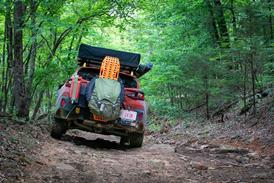
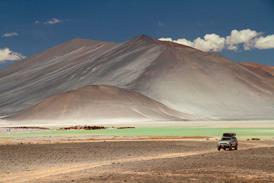
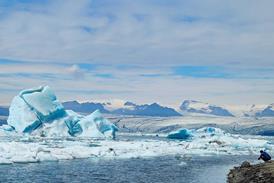
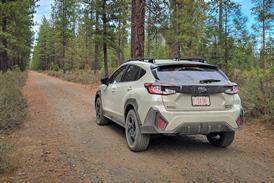
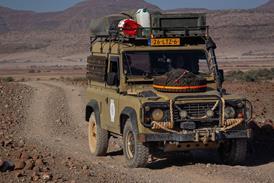
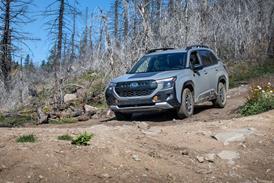
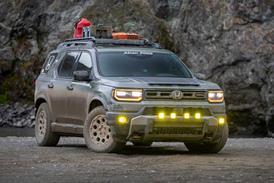
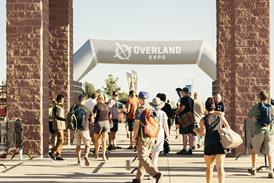
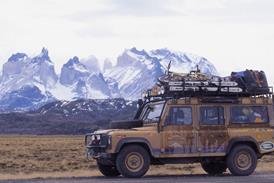
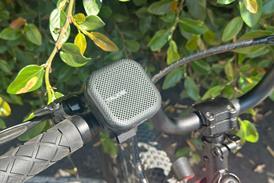
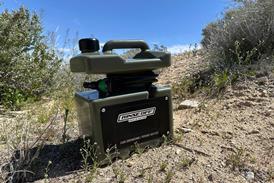
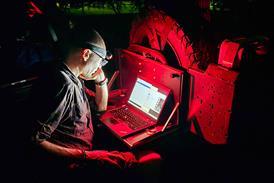

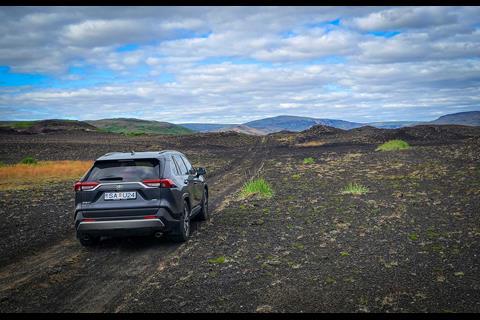
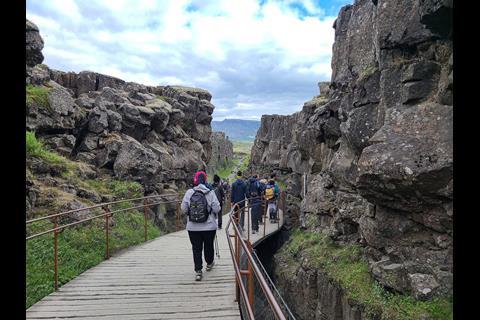
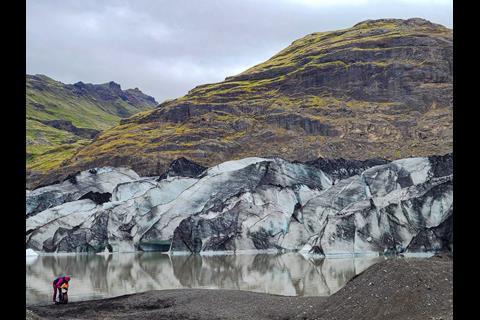
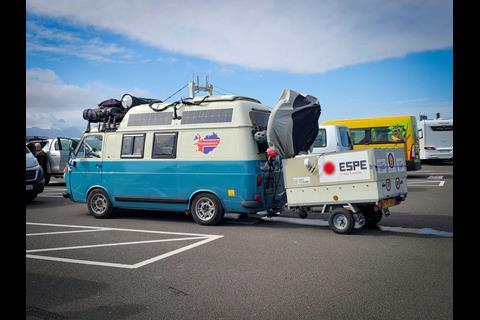
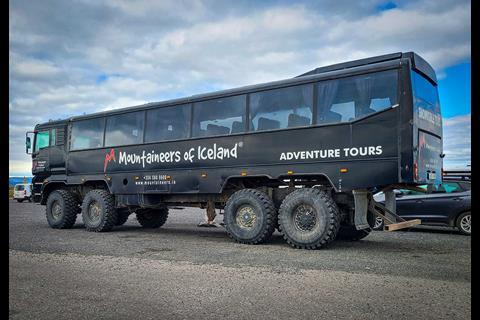
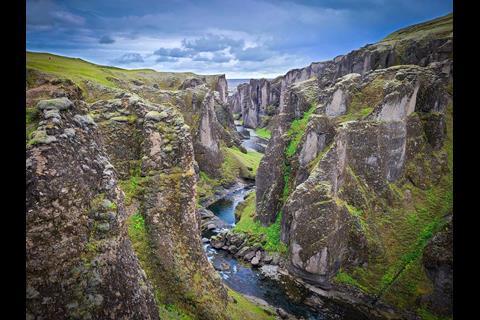
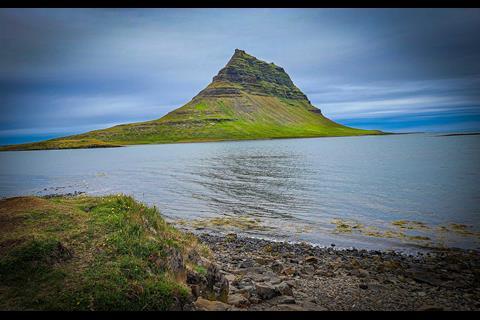
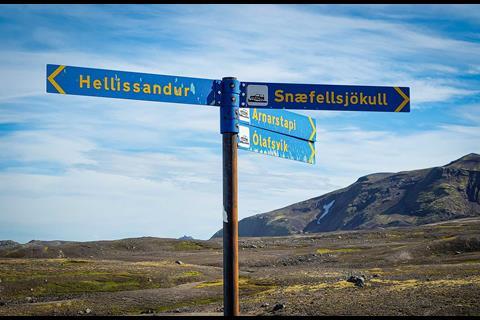
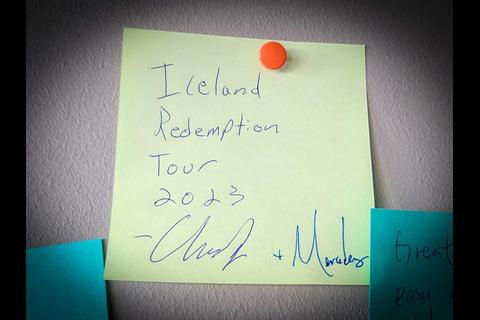
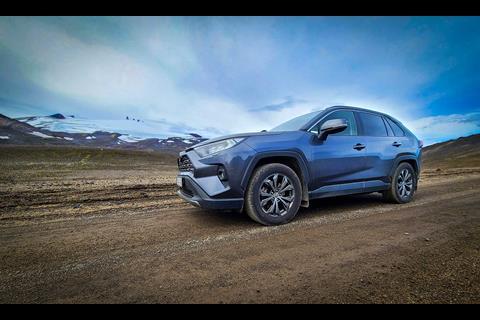
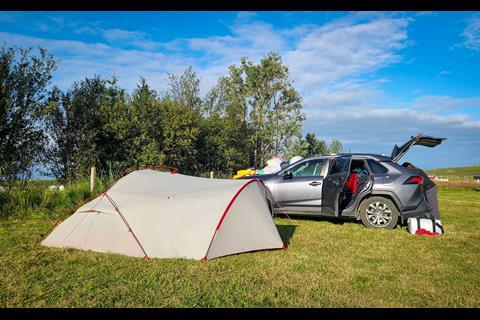
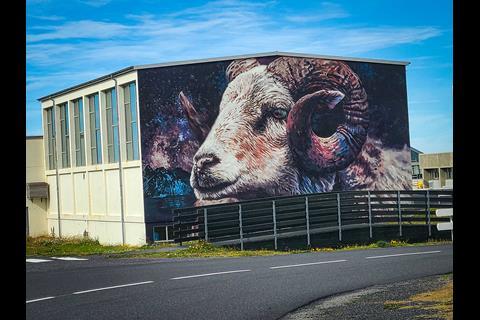
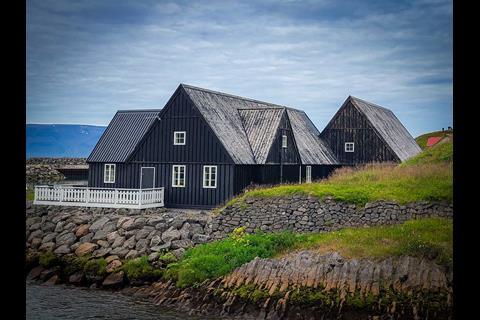
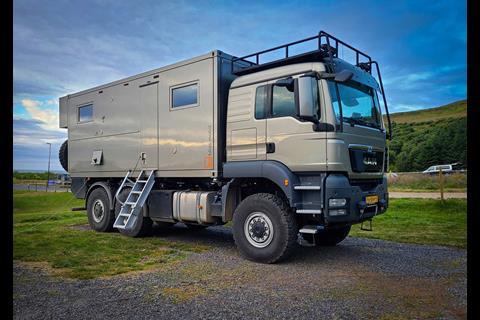
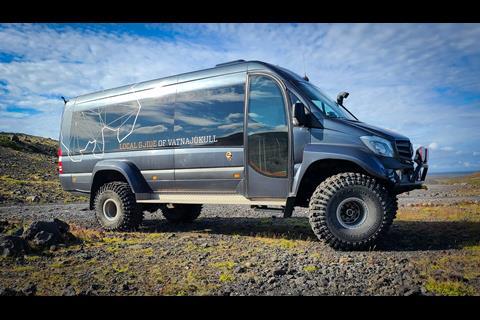
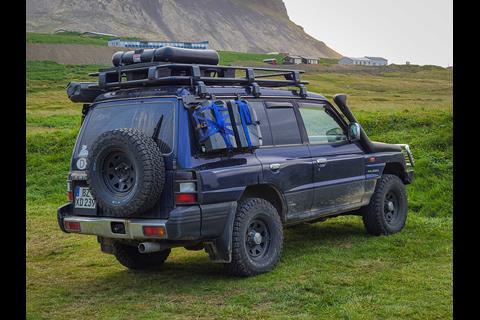
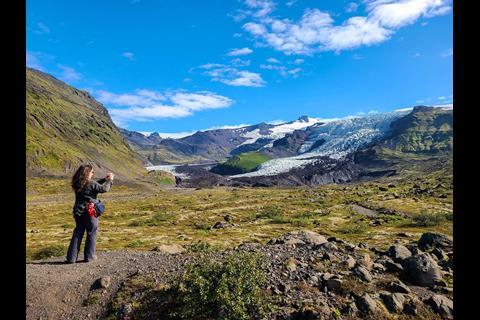
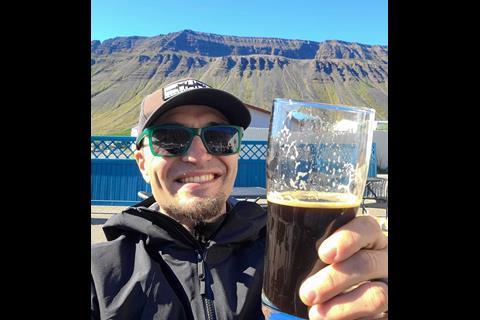
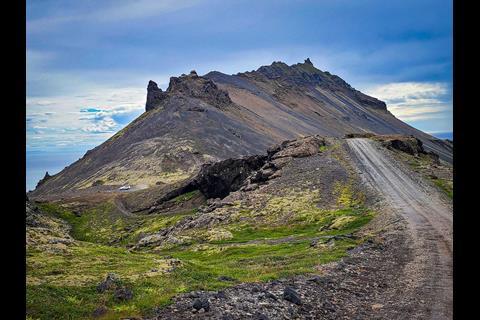
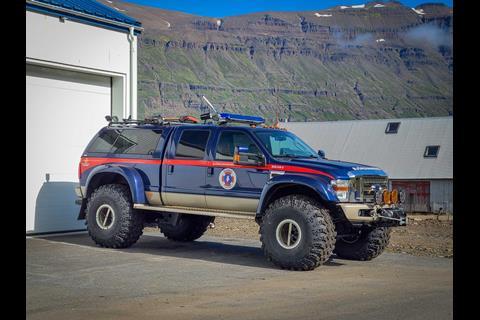
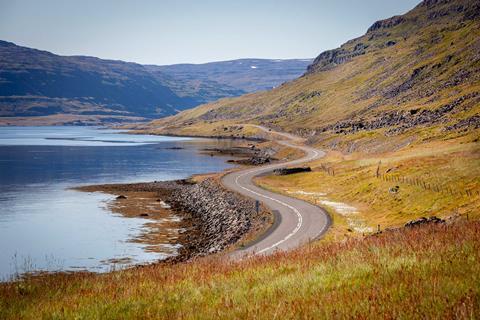






No comments yet